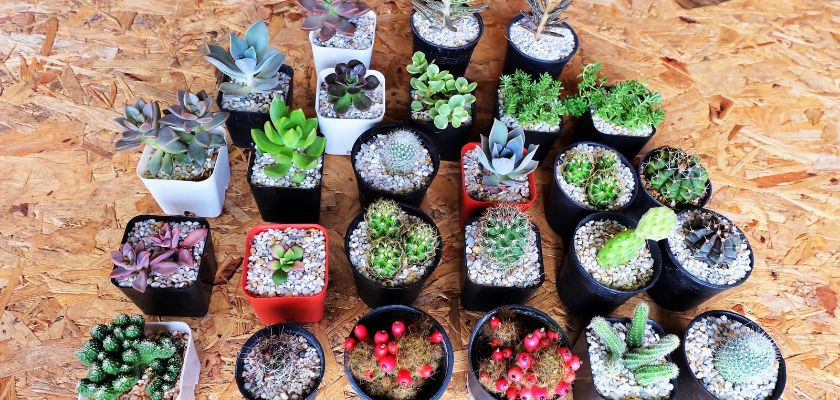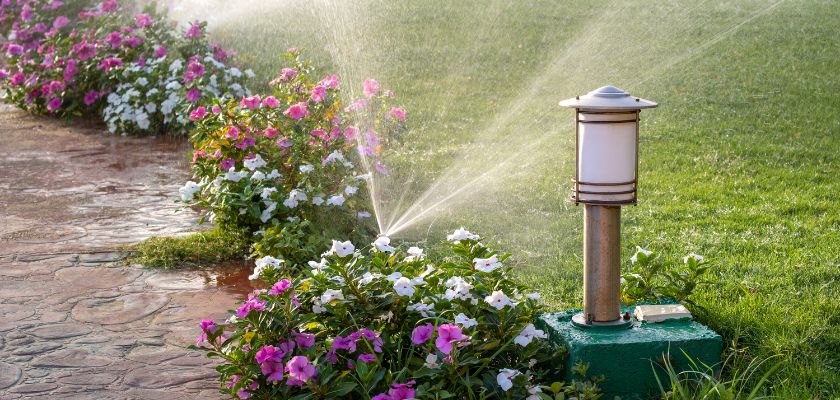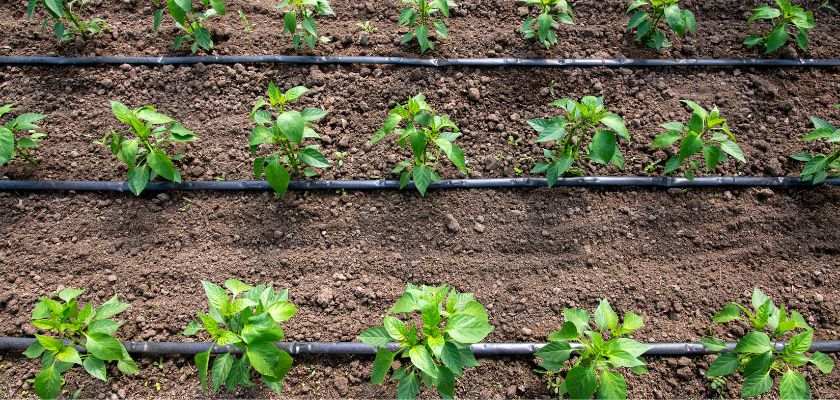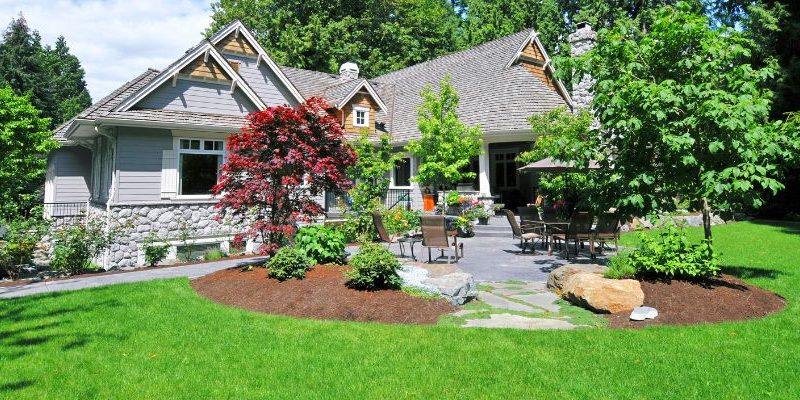In addition to being ecologically friendly, designing a landscape that can withstand drought is a practical way to save water and reduce maintenance. At Pristine Connections Group, we believe in blending sustainability and beauty. By following our Zen garden guide, you can create a beautiful, functional, and environmentally friendly landscape. Combining edible landscaping with effective lighting options ensures your landscape will not only withstand drought but also thrive in arid environments. Here’s how to create a drought-tolerant landscape that flourishes.
Selecting Drought-Tolerant Plants

Native Plants
Incorporating native plants into your landscape is one of the best ways to ensure drought tolerance. Native plants are adapted to the local climate and soil conditions, requiring less water and maintenance. Examples include various grasses, succulents, and wildflowers native to your region.
Edible Landscaping
Edible landscaping is a fantastic way to combine beauty and functionality. Choose drought-tolerant edible plants like herbs (rosemary, thyme, sage), fruit trees (fig, pomegranate), and vegetables (tomatoes, peppers) that can withstand dry spells. This approach not only conserves water but also provides fresh produce for your kitchen.
Succulents and Cacti
Succulents and cacti are excellent choices for a drought-tolerant landscape. These plants store water in their leaves, stems, or roots, making them highly resilient in arid conditions. They also add unique textures and shapes to your garden, enhancing its visual appeal.
Implementing Efficient Irrigation Systems

Drip Irrigation
Drip irrigation systems deliver water directly to the plant roots, minimizing evaporation and runoff. This method is highly efficient and ensures that plants receive the necessary moisture without wasting water. It’s an ideal solution for maintaining Pristine landscaping & lighting in a drought-tolerant garden.
Rainwater Harvesting
Collecting and storing rainwater is another effective way to support your drought-tolerant landscape. Install rain barrels or underground cisterns to capture runoff from roofs and gutters. This stored water can be used during dry periods, reducing reliance on municipal water supplies.
Mulching
Applying mulch around plants helps retain soil moisture, suppress weeds, and regulate soil temperature. Organic mulches like wood chips, straw, or compost decompose over time, enriching the soil with nutrients. Mulching is a simple yet powerful technique to support a water-efficient landscape.
Designing with Water Efficiency in Mind

Zoning Plants
Group plants with similar water needs together in your garden. This zoning strategy ensures that each plant receives the appropriate amount of water, preventing overwatering or underwatering. It also simplifies irrigation management, making it easier to maintain your Pristine landscaping & lighting.
Hardscaping
Incorporate hardscaping elements such as gravel paths, stone patios, and rock gardens into your design. Hardscaping reduces the amount of irrigated area and provides visual interest and functionality. Choose permeable materials to allow rainwater to seep into the ground, replenishing the soil moisture.
Efficient Lighting
Energy-efficient outdoor lighting enhances the beauty and functionality of your landscape while minimizing energy consumption. Use LED lights and solar-powered fixtures to illuminate pathways, garden beds, and focal points. Proper lighting also extends the usability of your outdoor space into the evening hours.
Final Wording
Creating a drought-tolerant landscape is a rewarding endeavor that combines aesthetic appeal with environmental responsibility. At Pristine Connections Group, we specialize in designing and maintaining beautiful, sustainable gardens. By incorporating edible landscaping and efficient lighting solutions, you can achieve a Pristine landscaping & lighting setup that thrives in dry conditions. Embrace these strategies to conserve water, reduce maintenance, and enjoy a lush, vibrant garden year-round.
FAQ’s
The best drought-tolerant plants include native species, succulents, and certain edible plants like herbs (rosemary, thyme), fruit trees (fig, pomegranate), and vegetables (tomatoes, peppers). These plants are adapted to survive with minimal water.
Drip irrigation delivers water directly to the roots of plants, reducing evaporation and runoff. This method ensures efficient water usage and is ideal for maintaining Pristine landscaping & lighting in a drought-tolerant garden.
Yes, rainwater harvesting is an excellent way to support your garden. Collecting and storing rainwater in barrels or cisterns provides an additional water source during dry periods, reducing reliance on municipal water supplies.
Edible landscaping integrates food-producing plants into your garden design. By choosing drought-tolerant edible plants, you can create a functional and beautiful garden that conserves water while providing fresh produce.
Mulching helps retain soil moisture, suppress weeds, and regulate soil temperature. Organic mulches decompose over time, enriching the soil with nutrients and supporting the health of your plants.







